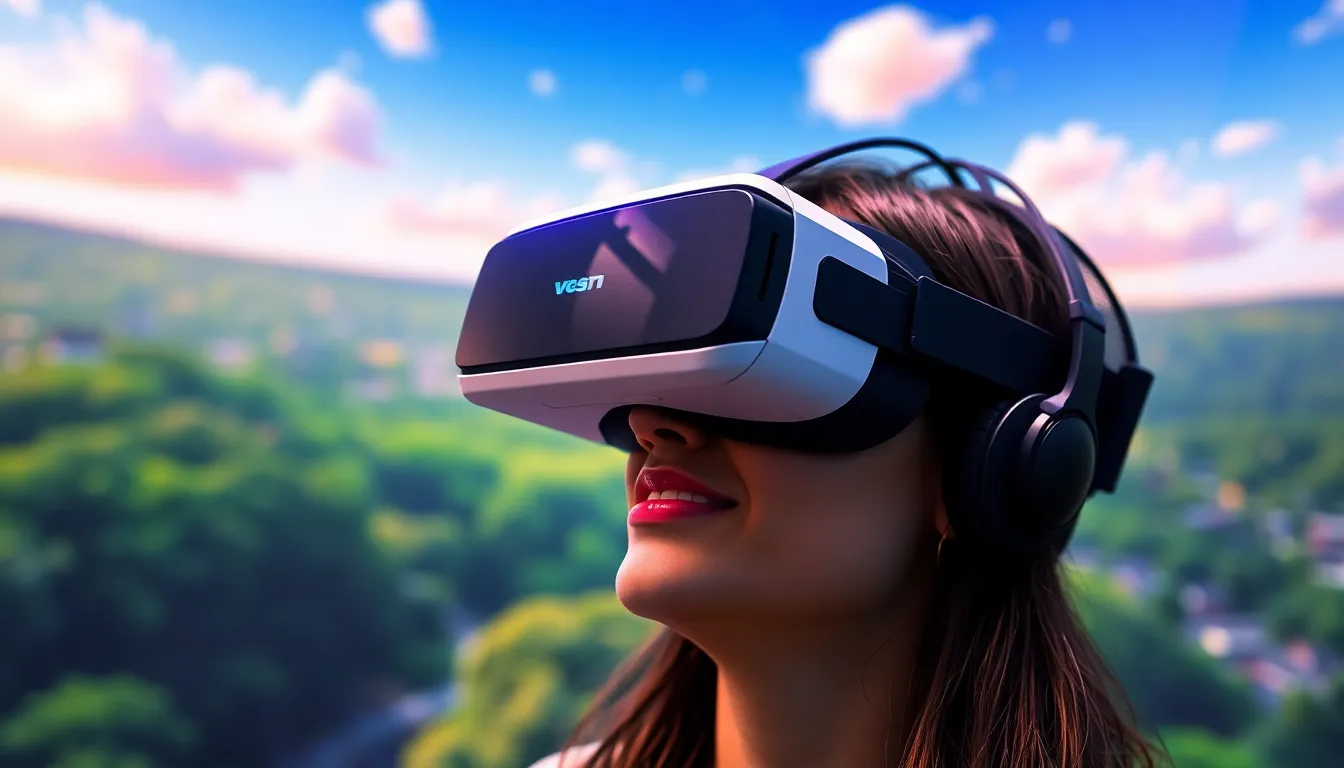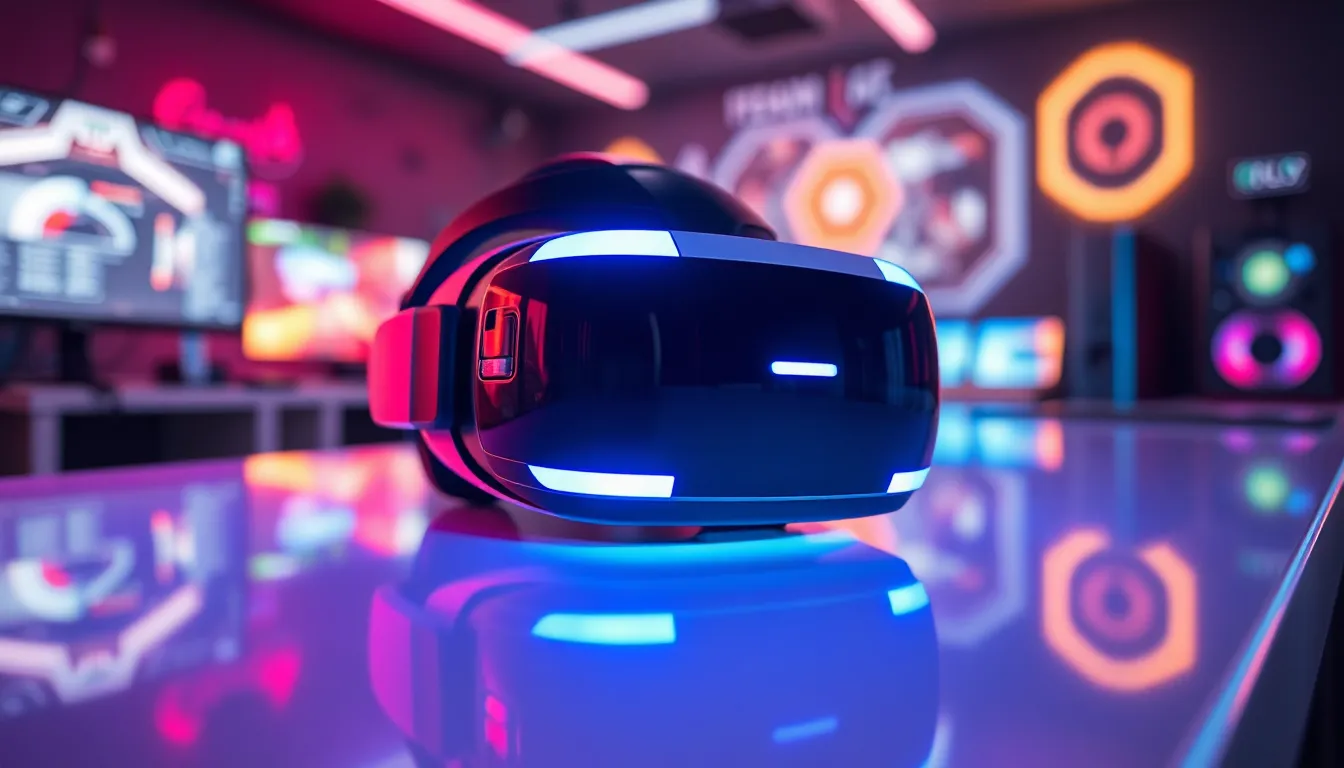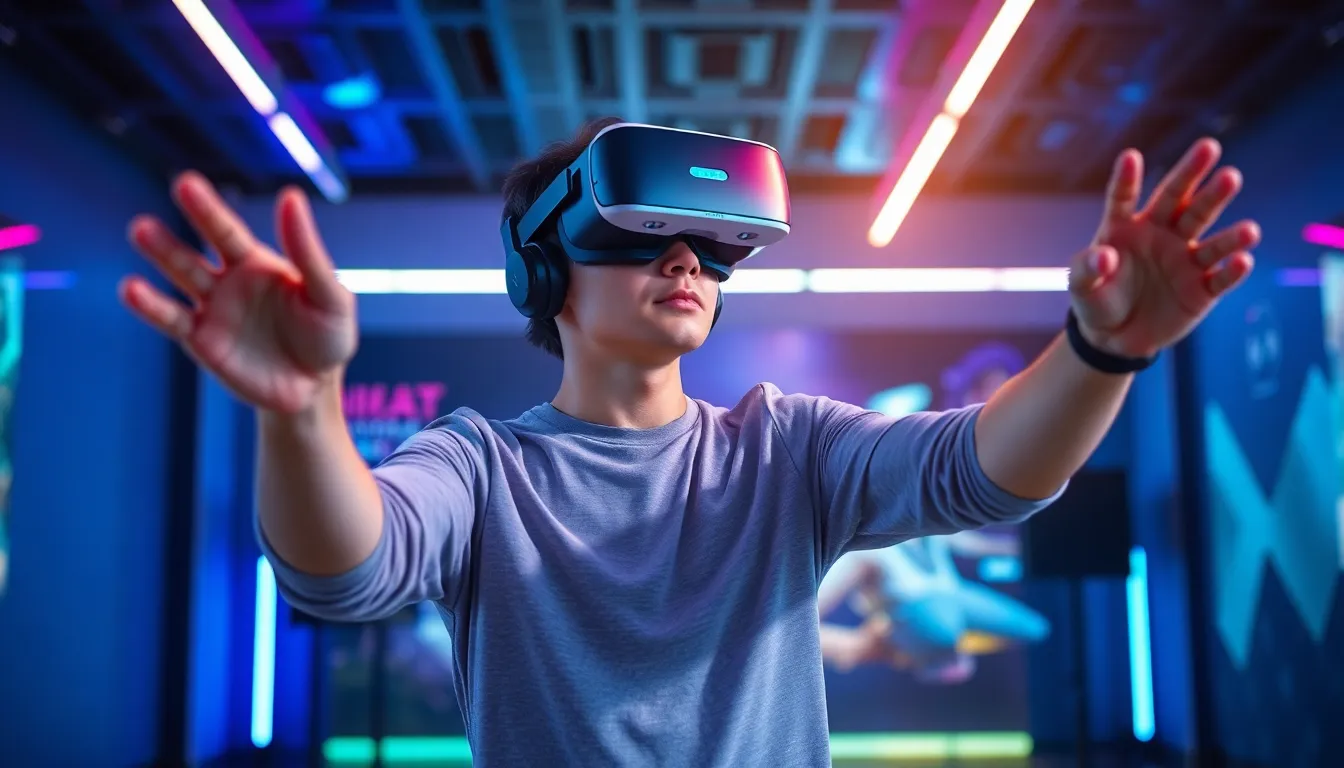In the ever-evolving world of virtual reality, resolution isn’t just a buzzword; it’s the magic carpet that transports users into breathtaking digital realms. Imagine strapping on a headset and being whisked away to a world so vivid that you can almost feel the breeze on your face. But hold on—if the resolution’s as low as a potato, that magical experience might just turn into a pixelated nightmare.
Table of Contents
ToggleOverview of VR Headset Resolution
Resolution in VR headsets significantly impacts user experience. A higher resolution enhances clarity in visuals, making environments more realistic. For instance, common resolutions include 1080p, 1440p, and 4K, with 4K offering the sharpest image quality.
Pixel density plays a crucial role in resolution. Measured in pixels per inch (PPI), it determines how detailed the image appears. Generally, higher PPI values result in less visible pixelation.
Field of view (FOV) affects how immersive the experience feels. A wider FOV, paired with higher resolution, creates an expansive visual area. This combination leads to more engaging storytelling in virtual environments.
Refresh rates also connect closely with resolution. Standard refresh rates range from 60 Hz to 120 Hz. A higher refresh rate reduces motion blur, enhancing the experience during fast-paced action.
Current market trends indicate a shift toward higher resolutions. Companies like Oculus and HTC are launching headsets with superior specifications. Competitive offerings push the boundaries of what users expect from VR.
Moreover, the choice of resolution often depends on content type. Gaming generally benefits from higher resolutions compared to passive viewing experiences. Developers and creators optimize graphics to leverage the full potential of VR headsets.
Advanced technology, such as OLED and LCD panels, contributes to improved visuals. These display technologies enhance contrast and color accuracy, further elevating the user experience.
Selecting a VR headset with the right resolution involves considering multiple factors, including pixel density, field of view, and refresh rates. As the industry evolves, maintaining awareness of these specifications can guide consumers toward the best immersive experience.
Importance of Resolution in VR

Resolution plays a critical role in the overall virtual reality experience. High resolution enhances visual clarity, creating a more captivating environment for users.
Enhancing Immersion
Immersion significantly improves with higher resolutions. Users benefit from sharper images that enhance detail and realism. Enhanced pixel density contributes to a smoother visual experience, minimizing the visibility of individual pixels. Users notice a more lifelike appearance in VR environments as a result. Companies like Oculus and HTC leverage advanced display technologies to improve immersion further. Both OLED and LCD panels provide superior contrast and color accuracy, allowing for more engaging experiences. A higher field of view combined with elevated resolution amplifies the sense of presence, drawing users deeper into virtual worlds.
Reducing Motion Sickness
High resolution also plays a vital role in minimizing motion sickness during VR sessions. Clear and detailed visuals help the brain process motion more effectively. Lower pixelation reduces discrepancies, allowing for seamless movements that align with user actions. Users experience less discomfort when engaging in fast-paced action, as higher refresh rates complement enhanced resolution. Smoother visuals lead to a more comfortable experience, enabling users to enjoy longer sessions. Resolution affects the perception of speed, making transitions appear more fluid. By considering these factors, developers can create VR experiences that feel natural and reduce the likelihood of motion sickness.
Different Types of VR Headset Resolutions
Virtual reality headsets come in various resolutions, affecting how users perceive their digital environments. Understanding these types aids in selecting the right device.
Standard Resolutions
Common standard resolutions include 1080p and 1440p. 1080p, also known as Full HD, offers 1920 x 1080 pixels, providing acceptable clarity for many applications. 1440p, or Quad HD, features 2560 x 1440 pixels, delivering improved visual performance, especially for gaming. Users often notice sharper images and reduced pixelation, improving overall experiences. Many affordable headsets utilize these resolutions, making them accessible options for newcomers to VR.
High-Resolution Options
High-resolution headsets offer superior clarity and detail, with options like 4K (3840 x 2160 pixels) becoming increasingly popular. 4K resolutions provide stunning visuals, enhancing immersion significantly. Premium models from brands like Oculus and HTC feature even higher pixel counts, which enhance realism in virtual environments. These headsets often cater to serious gamers and professionals, providing exceptional experiences. Increased pixel density ensures visuals appear smoother and more defined, contributing to an overall more engaging experience.
Impact of Resolution on Performance
Resolution significantly impacts the overall performance of VR headsets. High resolution enhances visual clarity and makes virtual environments more engaging.
Frame Rate Considerations
Frame rates play a crucial role in providing a smooth VR experience. Higher resolutions can demand increased frame rates for optimal performance, as a frame rate of 90 Hz or above is often recommended. Lower frame rates may lead to visible motion blur, which can detract from immersion. Gamers frequently prefer frame rates that align with high resolutions to ensure fluidity during fast-paced actions. It’s essential for VR systems to balance resolution and frame rate effectively. A headset with a resolution of 1440p paired with a frame rate of 120 Hz delivers stunning visuals while maintaining performance.
Hardware Requirements
Hardware requirements directly influence the performance of VR headsets. High-resolution displays necessitate powerful graphics processing units (GPUs) to manage rendering demands efficiently. Systems equipped with GPUs like NVIDIA RTX 30 series or AMD Radeon RX 6000 series handle high resolutions much better than lower-end models. Moreover, sufficient CPU performance is vital for managing complex VR environments. Insufficient hardware may lead to lag and decrease user satisfaction. It’s critical for users to evaluate their hardware capabilities when selecting a headset to guarantee an optimal experience at higher resolutions.
Resolution plays a pivotal role in the virtual reality experience. Higher resolutions not only enhance visual clarity but also significantly improve immersion and comfort. As technology advances companies are prioritizing high-resolution displays to meet the demands of gamers and professionals alike.
With options like 4K becoming more accessible users can expect stunning visuals that bring virtual environments to life. It’s essential to consider factors such as pixel density and refresh rates alongside resolution to achieve the best performance. By understanding these elements consumers can make informed choices that elevate their VR experiences.








